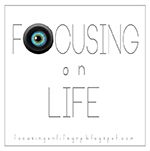by Dotti
Now, does anybody have any ideas about how the practice of using Christmas lights began? Yes, Susie, please tell us what you know.
Susie: Didn't it begin during Queen Victoria's reign?
Professor: Well, Queen Victoria certainly had a big role in making the tradition popular.
As best we can tell, the practice of using candles to light Christmas trees began in upper class homes in Germany in the 18th century. Since candles were quite expensive then, only those who were rich could afford to do this.
In the United Kingdom, the practice did indeed become established during Queen Victoria's reign. From there it spread to North America and Australia. Candles, of course, were not an ideal way to light a tree and care had to be taken to avoid fires.
Electric lights were introduced during the 1880's and eventually replaced most, if not all, use of candles, although some cultures do still use candles today. In the United Kingdom, the electric lights are commonly referred to as 'fairy lights',
In 1895, President Grover Cleveland had the honor of lighting the first electrically lighted White House Christmas tree. It's said that there were 100 multicolored lights on it. That seems odd to us today when we realize that trees in most American homes have far more than one hundred lights. But the lights then were quite a bit larger than the lights we see today. Today's lights do truly look like 'fairy lights'.
At first all the Christmas lights remained indoors. It wasn't until the early 1900's that lighted Christmas trees were introduced to the outdoors, perhaps in San Diego, though other cities also lay claim to being the 'first'.
After that, Christmas lights seemed to appear all over, in doorways, windows, store windows, on light posts, just about everywhere. It wasn't until the 1950's that the practice of using lights as outdoor displays found its way into the average American home.
The first Christmas lights were indeed crude by our standards today. Now 'twinkle lights' or 'mini lights' are very inexpensive and seem to appear everywhere during the holidays. Some outdoor displays are quite elaborate not only using thousands of lights but mechanized special effects to create scenes and stories. And now almost every American city of any size has a commercial Festival of Lights.
So there you have just a brief history of the use of lights at Christmas time. Wherever, whenever this tradition began, the best part is simply enjoying all the beautiful lights that surround us at this time of year. And if you're like me, the lights you enjoy most are those on your very own Christmas tree.
Merry Christmas!
Class dismissed.
Research for this post came from Wikipedia.
















7 comments:
It always boggles my mind when I think they used candles on the trees...I used to have some replica clip on ornaments with candles in them for a long time, but I think they started to bend in the heat of the attic over the years. Lights on trees, a great tradition and photography prop! :)
Fun post! I can't imagine Christmas without lights. I was surprised to see that the use of outside lights began in the 1950's! Sooooo, that means I was in on the beginning of this tradition! Well, I was just a baby!
Very interesting. It's always fun to learn why we do things! I did see something on Pinterest about putting a string of larger lights on the tree in addition to all the small lights. It was pretty! Soon we'll be back to big lights all over the tree! I love all the lights of this season!
Very interesting. We are creatures that love light. For sure.
Very interesting, I love Christmas lights, almost like a little kid.
Thanks for the "lesson" Dotti! and your gorgeous images!
Thank you for the lesson Dotti! Twinkle lights are my favorite part of holiday decor,... how somber it would be not to see the glow of festive lights. Real candles on trees look so pretty, but oh my! I can imagine how dangerous this can be!
Post a Comment
Thank you for sharing part of your day with us. If for any reason you are unable to leave a comment here on this post, please leave your comment on our Facebook page or in our Flickr discussion group. We love hearing from you!